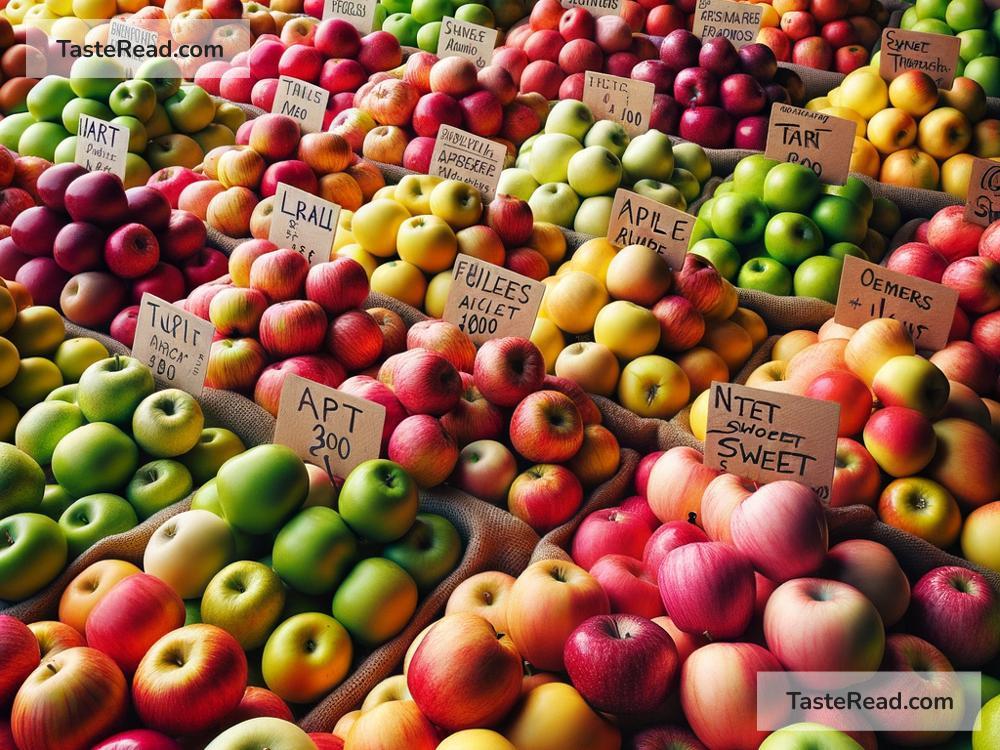Exploring the Mystery of Apple Colors and Flavors
Apples are one of the most popular fruits in the world. They’re crunchy, sweet, juicy, and perfect for snacks, desserts, or even salads. But have you ever stopped to think about the variety of apples out there? They come in so many colors, shapes, and flavors—red, green, yellow, sweet, tangy, and everything in between. What makes apples so special? Why are they different in taste, texture, and color? Let’s unravel the mystery behind these delightful fruits.
The Rainbow of Apple Colors
One of the first things we notice about apples is their color. While most people think of apples as red, they can also be green, yellow, pink, orange, or even a blend of several colors. What gives apples their color? The answer lies in natural chemicals called pigments.
-
Red Apples: The bright red color of apples, like Red Delicious, comes from pigments called anthocyanins. These pigments are affected by how much sunlight the apple gets while it’s growing. Apples exposed to plenty of sunlight will often turn a deeper shade of red.
-
Green Apples: Think of Granny Smith apples. Their green color comes from a pigment called chlorophyll, the same chemical found in green leaves. These apples also tend to have a tart flavor, but we’ll get into that in a bit.
-
Yellow Apples: Golden apples, such as Golden Delicious, owe their yellow hue to carotenoids. These pigments are also found in carrots and pumpkins. Yellow apples tend to have a sweeter flavor.
Color isn’t just about appearance—it also gives clues about an apple’s flavor, ripeness, and even nutritional content. For example, red apples often indicate sweetness, while green apples are usually tangier.
The Science of Apple Flavor
Apples are famous not just for their colors but also for their wide variety of flavors. Some are super sweet, while others are sour or even spicy. What determines how an apple tastes? It’s all about the balance of three things: sugars, acids, and aroma compounds.
-
Sugar Content: Sugars make apples sweet. Varieties like Fuji, Honeycrisp, and Gala are known for their high sugar content, which makes them taste extra sweet. These apples are perfect for eating fresh or making desserts.
-
Acidity: Acids create the tart or sour taste in apples. Granny Smith is a great example of a tart apple that has lower sugar and higher acid levels. Tart apples are often used in pies or savory dishes because they balance out other flavors.
-
Aroma Compounds: When you bite into an apple, you don’t just taste it—you also smell it. Aroma compounds are chemicals that make some apples smell fruity, floral, spicy, or even like candy. These aromas contribute to how we experience flavor overall. For example, Honeycrisp apples have a crisp, fruity aroma, while heirloom varieties like Ashmead’s Kernel can have a complex, nutty flavor.
Why Are Apples So Different?
You might wonder why apples come in so many shapes, sizes, colors, and flavors. The answer is nature and science working together. First, apples are grown in different climates and soil types around the world, which affects their taste and appearance. For example, apples grown in sunny California may develop more sugars, while apples from cooler climates like Michigan might have more acidity.
Second, apples are the result of careful breeding by farmers and scientists. Over thousands of years, farmers have been experimenting with apple trees, crossing different varieties to create new ones. That’s how we ended up with apples like Honeycrisp, which were bred specifically to be extra sweet and crunchy, and Granny Smith, which is tart and firm.
Fun Facts About Apples You Might Not Know
-
Thousands of Varieties: There are over 7,500 kinds of apples grown globally! Each variety has its own unique flavor, texture, and color.
-
The Magic of Genetics: If you plant an apple seed, it won’t grow into the same kind of apple it came from. Apple seeds are full of genetic surprises, which is why farmers use grafting to grow specific varieties.
-
Apple Skin Matters: The skin of an apple often holds a lot of its flavor and nutrients. Red apples may have sweeter skins, while green apples may have more of their tartness concentrated on the outside.
Choosing the Perfect Apple
When picking apples, think about how you want to use them. Sweet apples, like Fuji or Gala, are great for snacking or salads. Tart apples, like Granny Smith, are often used for cooking, especially pies and sauces. If you’re not sure, try an apple with a balance of sweet and tart, like Honeycrisp or Pink Lady.
Next time you bite into an apple, take a moment to appreciate the flavors and colors. Apples may look simple on the outside, but there’s a whole world of science, history, and nature hidden in each one.
So go ahead—explore new apple varieties, experiment with recipes, and enjoy the delicious mystery of apples!

